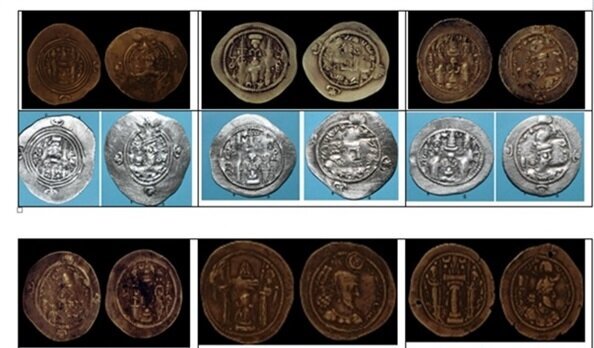Ancient Sassanid coins regain former luster

TEHRAN - A collection of 45 silver coins dating back to the Sassanid era (224 CE–651) underwent some rehabilitation works in western Lorestan province, the provincial tourism chief has announced.
The coins, which contained some deposits and corrosion, were cleaned and restored by cultural heritage experts in a laboratory at the Sassanid-era Falak-ol-Aflak Fortress in Khorramabad, Seyyed Amin Qasemi said on Wednesday.
The collection is planned to go on display in a museum located inside the historical fortress, the official added.
In many ways, Iran under the Sassanian rule witnessed tremendous achievements of Persian civilization. Experts say that the art and architecture of the nation experienced a general renaissance during Sassanid rule.
In that era, crafts such as metalwork and gem-engraving grew highly sophisticated, as scholarship was encouraged by the state; many works from both the East and West were translated into Pahlavi, the official language of the Sassanians.
Of all the material remains of the era, only coins constitute a continuous chronological sequence throughout the whole period of the dynasty. Such Sassanian coins have the name of the king for whom they were struck inscribed in Pahlavi, which permits scholars to date them quite closely.
The legendary wealth of the Sassanian court is fully confirmed by the existence of more than one hundred examples of bowls or plates of precious metal known at present. One of the finest examples is the silver plate with partial gilding in the Metropolitan Museum of Art in New York. The dynasty was destroyed by Arab invaders during a span from 637 to 651.
Lorestan, which is a region of raw beauty, was inhabited by Iranian Indo-European peoples, including the Medes, c. 1000 BC. Cimmerians and Scythians intermittently ruled the region from about 700 to 625 BC. The Luristan Bronzes noted for their eclectic array of Assyrian, Babylonian, and Iranian artistic motifs, date from this turbulent period. Lorestan was incorporated into the growing Achaemenid Empire in about 540 BC and successively was part of the Seleucid, Parthian, and Sasanid dynasties.
ABU/ AFM
